When parents visit schools, they’re not just shopping for education — they’re making a decision that can shape a child’s entire life. And yet, walk into many international schools today and you’ll find a familiar sameness: white walls, grey floors, tidy corridors, and a faint sense of déjà vu. Functional, yes — but hardly inspiring.
For The British School of Brussels (BSB), that wasn’t good enough. The leadership team recognised that in a competitive international education market, differentiation couldn’t come from curriculum alone. The school’s identity — its warmth, courage, and care — needed to be lived, not just written on a prospectus.
They wanted a campus that didn’t just house learning but taught it by experience.

A New Kind of School Design
That ambition led BSB to partner with Kampus, a specialist in designing independent schools “from the inside out.” Kampus’ approach fuses architecture, interiors, and landscape into a single experience, grounded in the belief that space is one of education’s most powerful teachers.
“Schools are often treated as facilities,” says Kampus Executive Creative Director David Judge. “We see them as ecosystems — emotional, cultural, and physical. Our job is to make a school feel like its values.”
At BSB, that meant translating the school’s mission — to nurture confident, caring, courageous and curious learners — into tangible, sensory experiences. The result is a campus that feels open, human and humble; full of daylight, timber, and greenery; a place that naturally invites belonging.
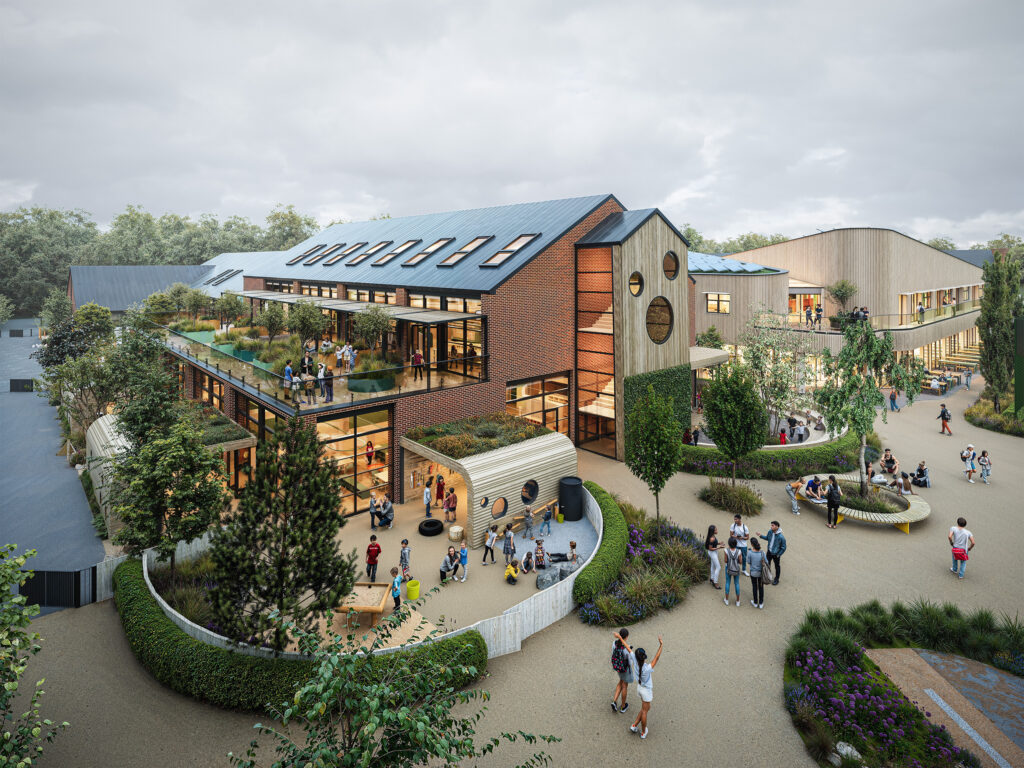
Designing Belonging
The design process began with listening. Kampus spent time with students, parents, and teachers, distilling their hopes into emotional drivers: curiosity, joy, agency, and calm. These feelings became the blueprint for the campus journey.
The heart of that journey is the Dining and Humanities Building, a timber-framed, light-filled “social learning commons” that replaces the traditional canteen. Here, food and community blend effortlessly — a space for dining, collaboration, debate, and celebration. It’s both functional and symbolic: an environment where education, culture, and wellbeing are nourished together.
Around it, classrooms spill into courtyards and wild gardens. Students learn among trees and sunlight; nature becomes a partner in education rather than a backdrop. This “borderless learning” principle guides the masterplan, connecting the indoors and outdoors with equal care.
Even the architectural form evolved from this philosophy. “We don’t design façades first,” explains Judge. “We begin with experience — the journey, the feeling — and build the architecture around it.”

A School that Grows with You
BSB’s design language matures as students do. Early years spaces are soft-edged, playful, and tactile — an environment that feels like a safe extension of home. As students move through the school, the palette becomes more refined, the geometry more defined. It’s a subtle but powerful message: as children grow, so does the world around them. The school becomes a mirror to their development, giving them a sense of progression and ownership — the essence of belonging.
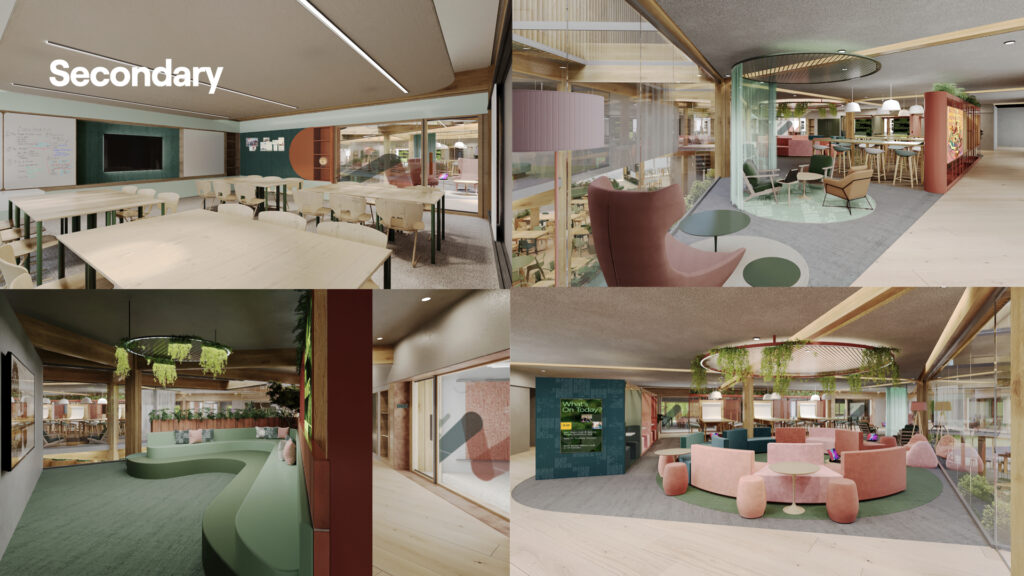
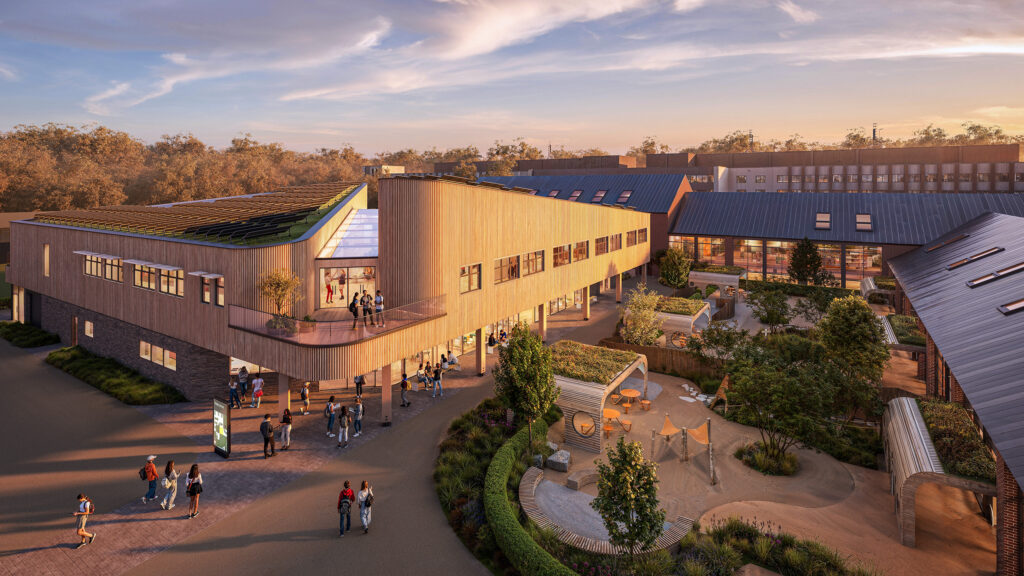
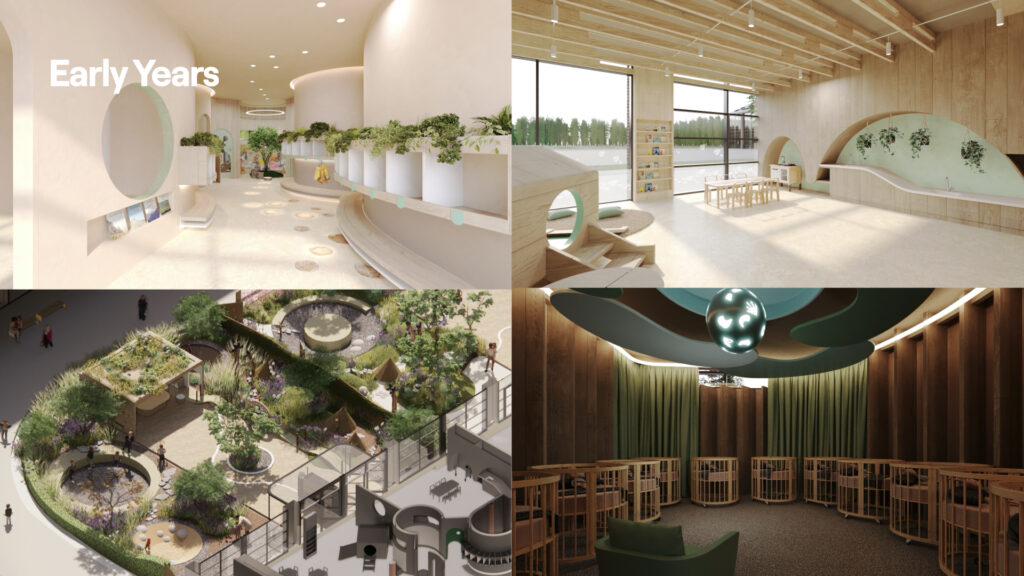
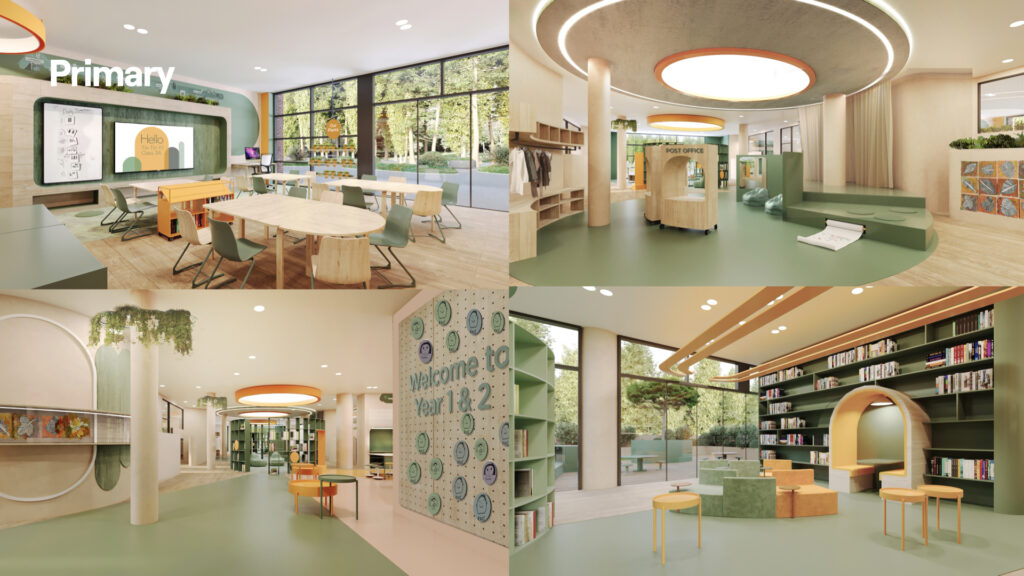
Sustainability as a Way of Thinking
While the campus feels effortless, the environmental performance behind it is rigorous. Kampus worked with engineers and partners to deliver an ultra-low carbon building envelope using timber structures, geothermal systems, and biodiverse green roofs.
Natural ventilation, daylight, and material health were calibrated to balance BREEAM and Passivhaus standards. The outcome isn’t just sustainable — it’s educational. Students see the systems at work and understand what responsible architecture looks like.
“Sustainability is not a style,” Judge says. “It’s an ethic. At BSB, the building itself teaches that lesson every day.”
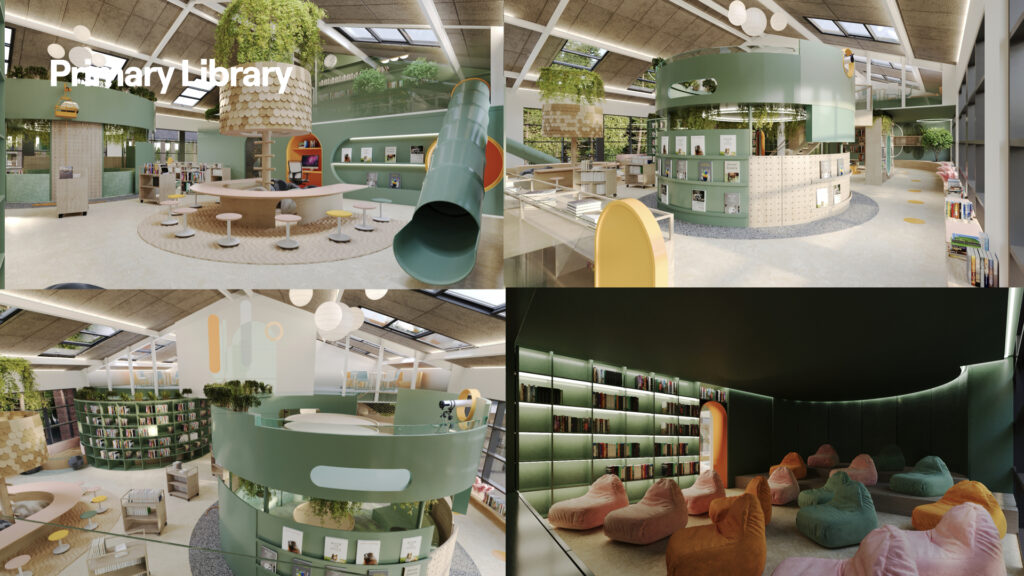
Experience as Competitive Advantage
The result is a school that parents feel as much as they see. From the moment they arrive, the difference is palpable: light, warmth, and the sound of laughter in places that might once have felt sterile.
For students, the campus nurtures creativity, empathy, and curiosity. For staff, it provides a flexible, inspiring environment that evolves with pedagogy. And for investors and governors, it protects long-term value by ensuring the school remains relevant and resilient in a changing world.
This is where Kampus’ philosophy of Land + Brand + Belonging comes to life — a framework that aligns property, school identity, and community need. The campus is not just an asset; it’s a living expression of the school’s purpose.

Data
Client: The British School of Brussels (BSB)
Size: K-12 1200 learners
Skills: Experience Strategy, Architecture, Interior Design, Landscape Design
Status: Opening September 2027
